- Overview
- Symptoms
- Causes & Risks
- Tests & Diagnosis
- Treatment
- Living With
- Mobility & Assistive Devices
- Complications
- Support & Resources
- View Full Guide
Ways to Manage RA Pain

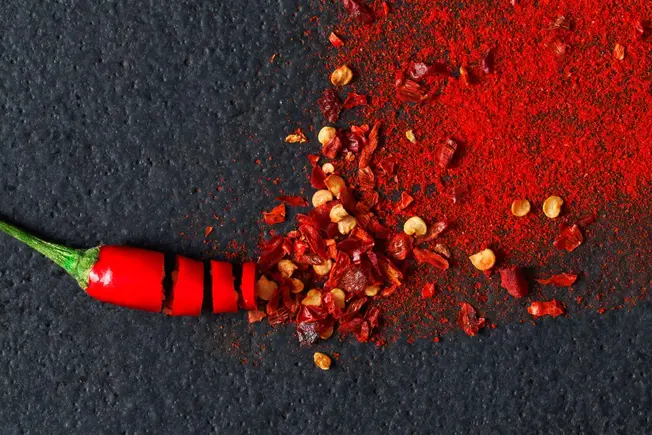
Rub on Capsaicin
This is the stuff that gives chili peppers their heat. When you put it on your skin, it blocks pain signals. Capsaicin comes in creams, gels, and patches. One study found that people who used capsaicin cream daily for a month (along with other arthritis medications) had their arthritis pain eased by 57%. Before trying it, dab a little on first to make sure you’re not allergic.
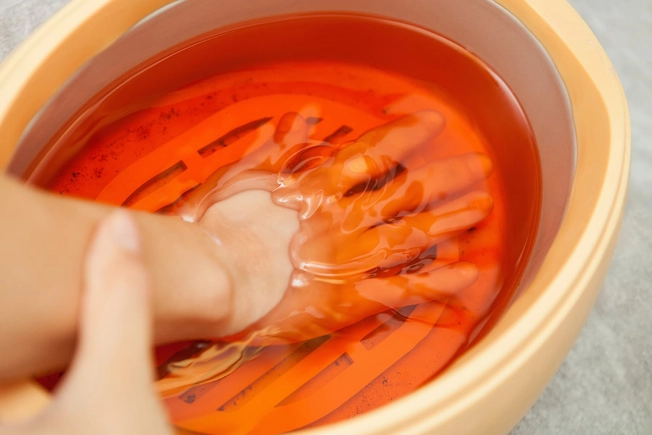
Dip Your Hands or Feet Into Wax
With a paraffin bath, you dip your hands or feet into melted wax that's heated to a safe temperature in a special machine. After it hardens, you wrap the area in a plastic sheet to trap in the heat. After about 20 minutes, you peel the wax off. Research shows that this may ease arthritis pain and stiffness for some people. Talk with your doctor or a physical therapist to see if it might help you.
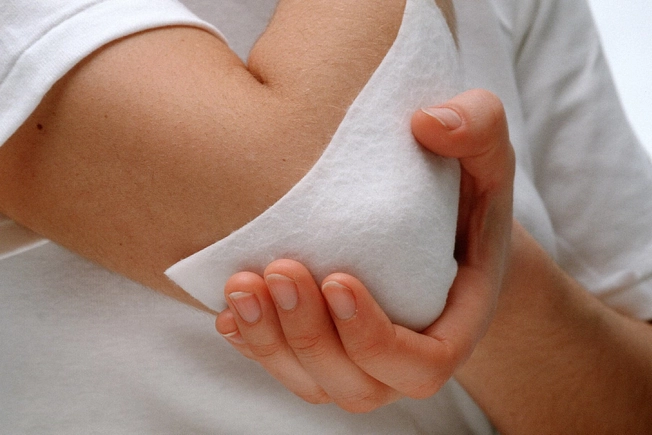
Put on a Pain Patch
Over-the-counter pain patches have medicines that are taken in through your skin, like menthol and camphor. These ingredients made from plants can create cold or hot feelings, which may affect pain signals. Other patches include lidocaine, which causes a numbing feeling, or salicylates, which have the same pain-relieving substance as aspirin. Research suggests these patches can help some, but they wear off quickly.
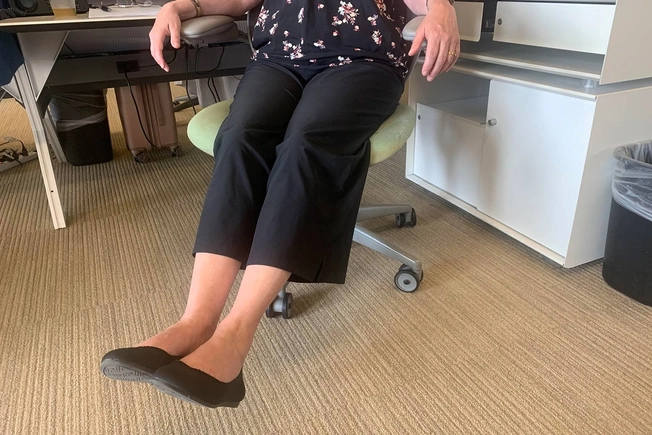
Move Around Gently
During a flare, it’s tempting to spend all day in bed. While resting is good, you should try to keep moving, too, to keep your joints from getting too stiff. You might sit down and slowly raise and lower your legs. Or gently spread your fingers apart then bring them together. But don’t overdo it. If a movement causes more pain, stop right away.
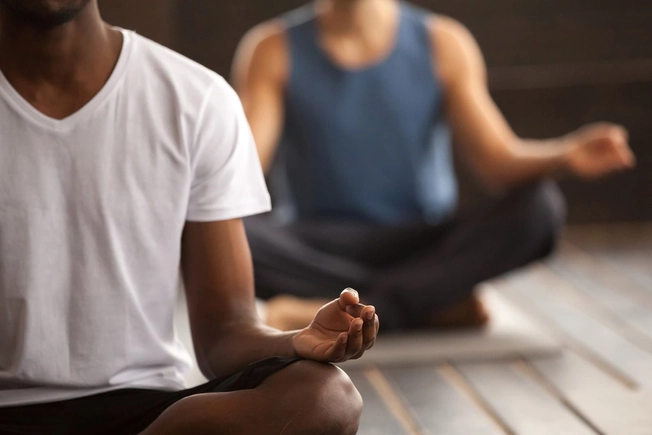
Keep Your Stress in Check
Research shows that worrying can make your rheumatoid arthritis worse and make you more tired. To manage your stress, carve out at least 15 minutes each day to unwind. Meditation can help ease anxiety and depression. Or choose your own relaxing activity, like deep breathing, sitting outside in the sunshine, or simply watching the sunset.
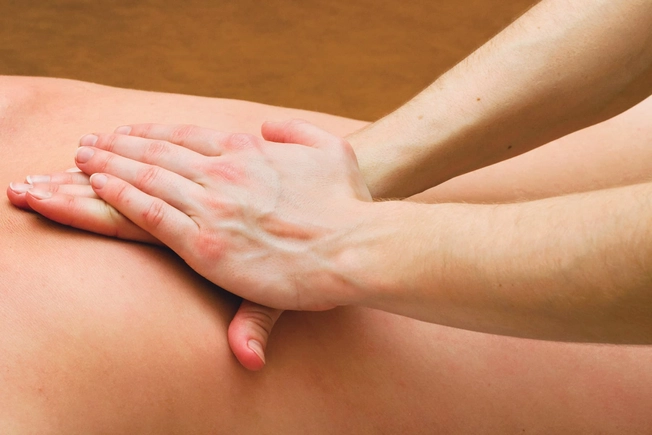
Get a Gentle Massage
This can do more than leave you feeling relaxed and help with arthritis pain and stiffness. It may also improve your muscle strength. But before getting one, check with your doctor to make sure it’s safe. Gentle to moderate pressure is best; don't put too much pressure around any affected joint. You can go to a massage therapist, recruit a friend, or give yourself a massage.
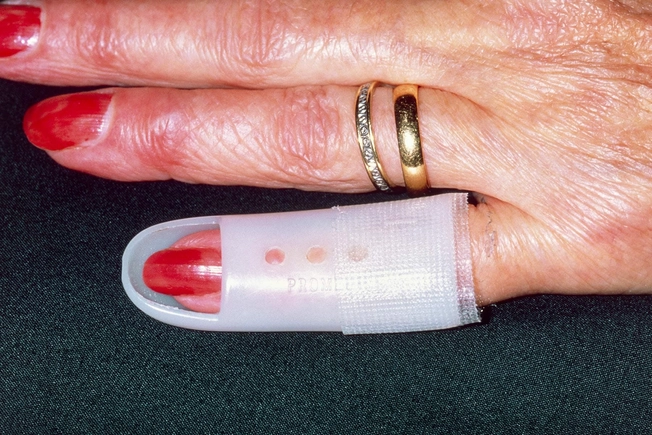
Use a Brace or Splint
These support swollen, painful joints and let them rest. They also can align joints and help them work better. Wearing a splint or brace may also prevent deformities caused by rheumatoid arthritis, like crooked fingers. You can use one on your wrist, finger, ankle, or feet joints. You wear some while you sleep or rest, while others help ease pain throughout the day.

Practice Guided Imagery
This is a type of therapy where you create visions in your mind. For example, you might picture yourself on a serene beach, breathing deeply as your pain floats away. This practice helps you relax and handle discomfort better. Research shows that it lowers pain, stress, and anxiety in people who have arthritis. To get started, ask your doctor about therapists or classes. There are also audiobooks, CDs, and online resources.
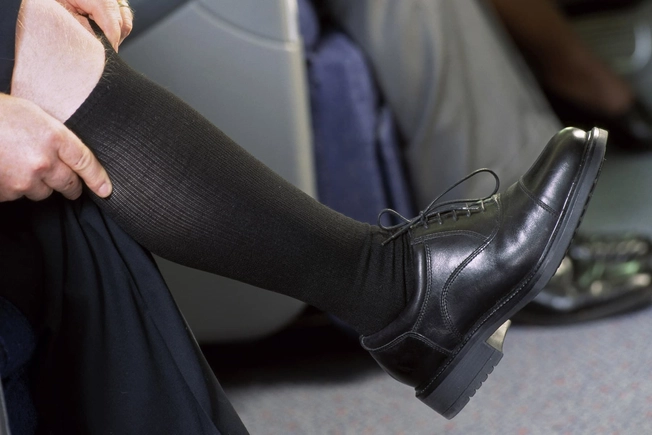
Wear Compression Garments
These garments, like socks, sleeves, and gloves, use gentle pressure to boost blood flow. They also may help with swelling from a flare. You can wear socks or stockings to ease foot and ankle pain, and gloves (sometimes called arthritis or therapy gloves) can soothe aching fingers and wrists. When you wear these items, check the skin underneath often to make sure it doesn’t get red or irritated.
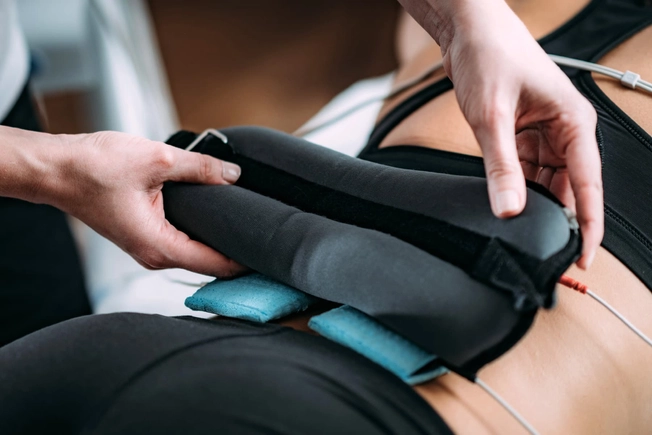
Try TENS
This small machine sends low-voltage currents through patches on your skin. It’s not clear how TENS works, but one theory is the electricity affects pain signals. It may also trigger endorphins, chemicals that are your body’s natural painkillers. Research is mixed, but some studies suggest that doing TENS 15 minutes a day eases joint pain and boosts muscle strength. You can buy a TENS unit to use at home, but talk to your doctor first.
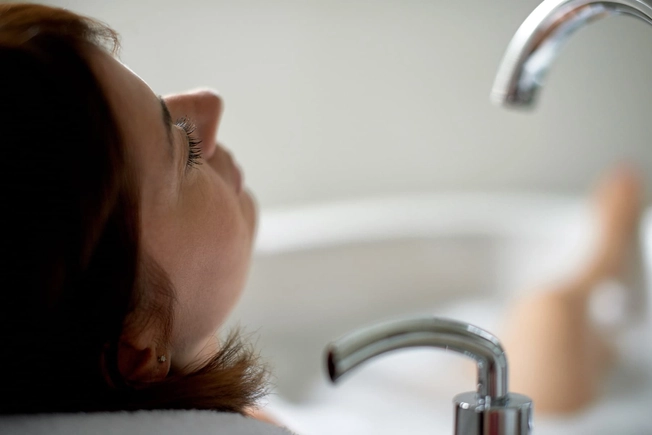
Draw a Warm Bath
The water’s warmth relaxes your muscles and eases stiff, painful joints. It also helps your circulation and takes pressure off your joints. The bath doesn’t have to be steaming hot; aim for a temperature between 92 and 100 F. For more benefits, add Epsom salt. It has magnesium, a mineral that may help with swelling. Soak for about 20 minutes. A hot tub or Jacuzzi is another option, but don't stay in longer than 10 to 15 minutes.
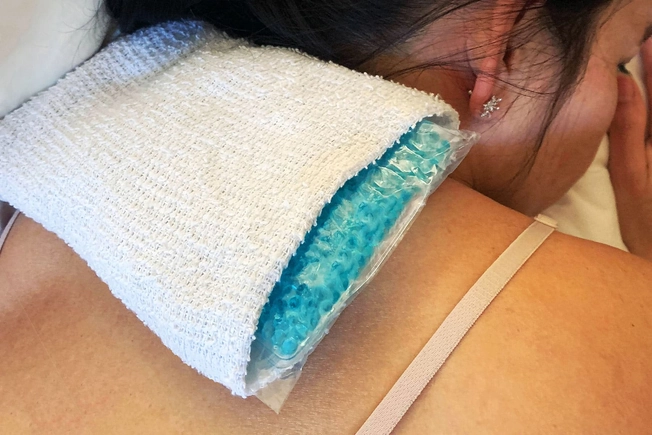
Use a Heating Pad
Heat relaxes your muscles and boosts your blood flow, bringing nutrients to your joints and muscles. To turn up the heat, put a heating pad on the aching joint for 20 minutes at a time. Place a towel or T-shirt beneath the pad to protect your skin. Or make your own by putting a wet washcloth in a microwave-safe bag. Heat it for 1 minute and wrap it with a towel. You can also use an electric blanket.
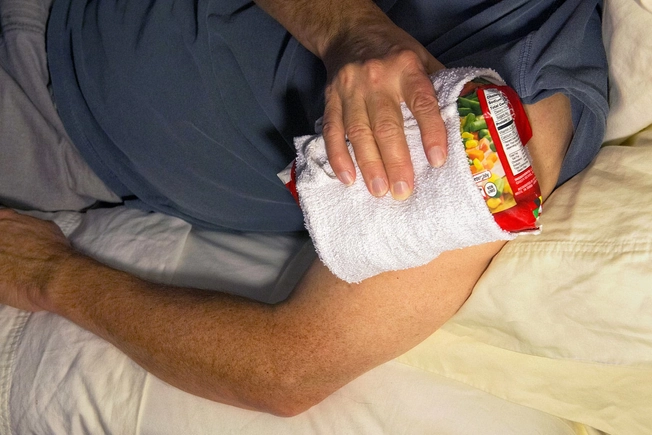
Put on an Ice Pack
Cold numbs nerve endings and slows your blood circulation to ease swelling. Wrap a bag of ice or frozen vegetables in a towel and put it on the joint. Leave it there for no more than 20 minutes at a time. You can also make an ice pack by freezing 2 cups of water and 1 cup of rubbing alcohol in a leakproof bag. Or soak the painful area, such as your hands or feet, in a container of ice and water.
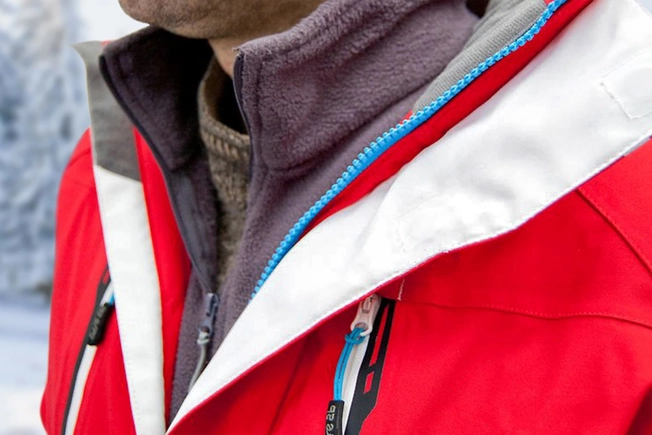
Dress in Light Layers
Cold weather may make arthritis symptoms worse. To beat the chill, dress in lightweight layers -- they trap body heat without weighing you down. Start with clothing made from a wicking fabric, such as silk or a nylon blend, and top it with a warm layer, such as fleece or a sweater. Headed outside? Add a weatherproof jacket, scarf, hat, and gloves.

Make Sleep a Priority
Getting 7 to 8 hours of sleep is even more important during a flare. Not scoring enough shut-eye can trigger inflammation and the release of stress hormones, and it can make dealing with pain harder. While your aching joints may make it tough to nod off, having good habits can help. For a better night’s rest, stay away from alcohol, caffeine, and large meals before bedtime. Try to go to bed and wake up around the same time each day.

Eat a Healthy Diet
Filling your plate with fruits, vegetables, whole grains, and beans is good for arthritic joints. Also add some healthy fats, such as nuts and olive oil, which can ease inflammation. Eating this way can help you stay at a healthy weight, and that’s important because extra pounds put pressure on painful joints. Also load up on fish that have omega-3 fats, which have been shown to help ease joint pain.